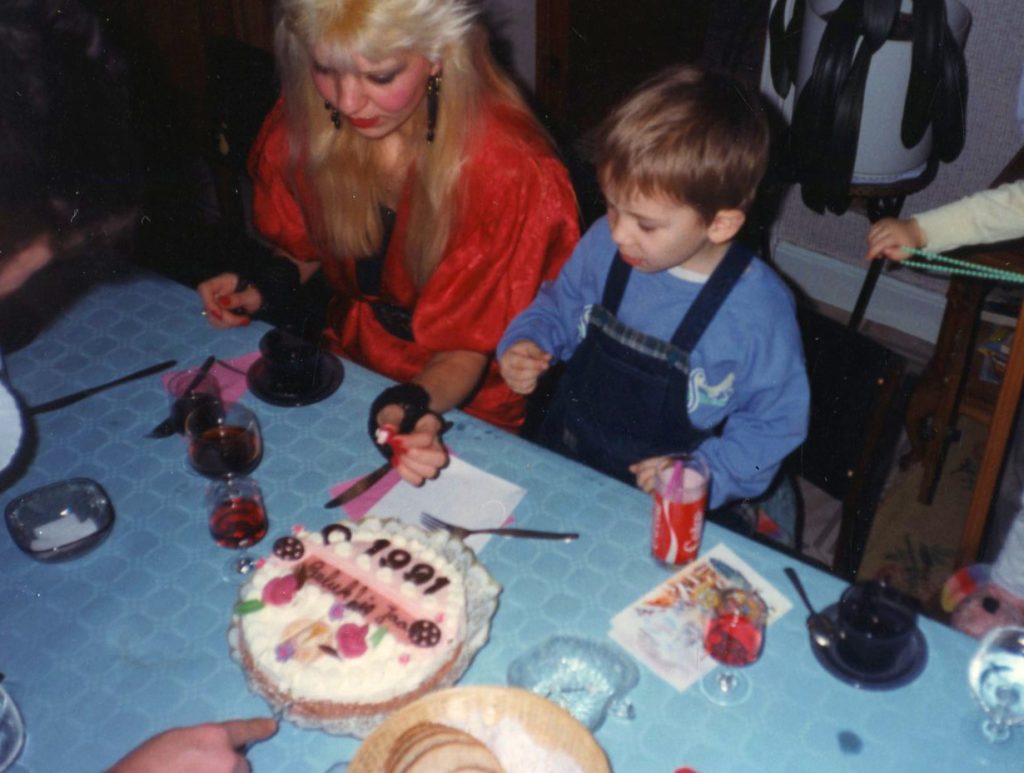
I’ve had a mysterious GI illness for a few months, and food’s been my obsession. Figuring out what to eat has become the most important part of each day, and I look back with deep longing at the years when I could eat whatever I wanted to. When I have a string of bad days filled with pain it’s hard not to feel down, so I go to the nectar of my soul: family photos from the 90’s.
I’m especially fond of the food in these pictures. On special occasions, the table had joyous whipped cream, mushroom-cloud puffy cakes topped with cherries, hypercoloured juice boxes, pies snowed over with sugar, beachy Mickey Mouse paper plates, blistering red Coca-Cola cups, and ethnic delicacies like mămăligă (cornmeal porridge pronounced “muh-muh-league-uh”).
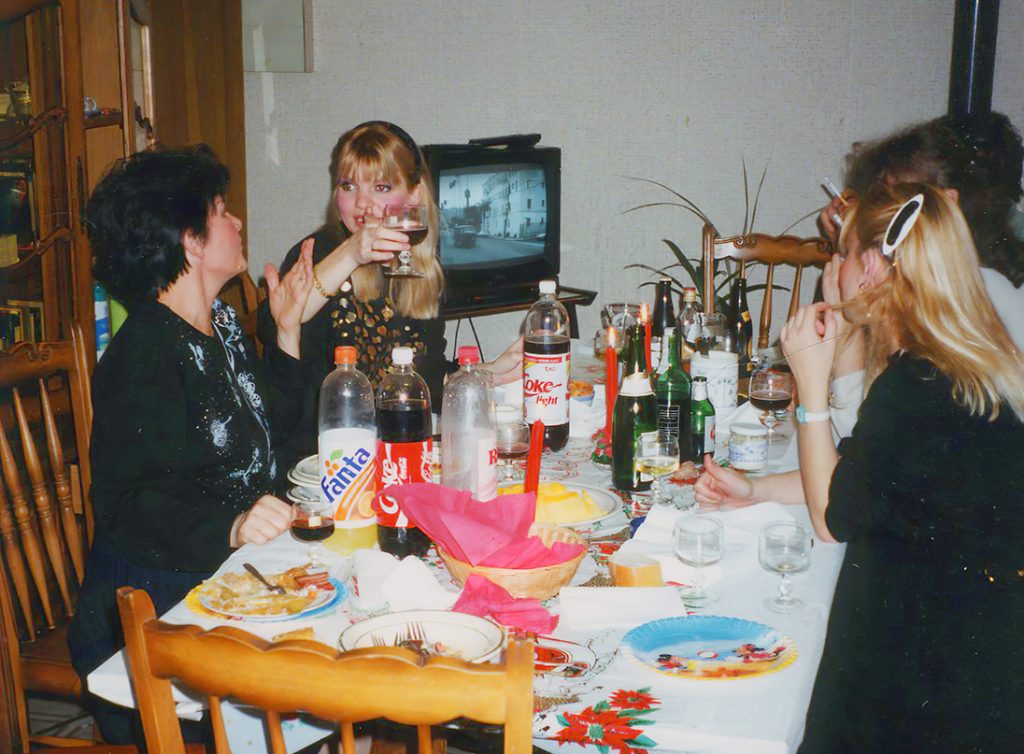
To my modern yuppie eye, accustomed to shopping at Whole Foods and counting micronutrients, this is an uncomfortable mix of poisonous, fake food sprinkled with garish corporate pseudo-art. But to my Romanian immigrant eyes, it’s the long-awaited sigh of deep relief after the chaotic crash of brutal austerity. The Romanian dictator initiated a “Rational Eating Program” which steadily lowered calorie allowances as the years went on, a number approximately three times lower than a developed country’s per-capita consumption. But you’re thinking, who needs 9000 calories anyway?
In practice, this meant giant international bureaucracies like the IMF choking millions of civilians, charging up to 13.5% interest and demanding an increase in food and gasoline prices. People’s wages were cut across the board and prices on all items were eventually increased. The practice of regularly confiscating produce from peasants, which had been abolished a generation before, got put back into place. Students were used as field laborers in the summer, and even salaried adults would sometimes lose chunks of their weekend to sort carrots or pick corn if the army wasn’t enough of a help.
While the rationing in Bucharest was less stringent on basics like bread and didn’t involve the plain theft and deprivation that villagers experienced, my grandfather would still have to get up at the break of dawn to wait in line for hours. I would hungrily stare at my grandma feeding my younger cousin, not daring to directly ask for more, but suggesting politely that, if it would bring her pleasure, I would certainly not mind a little extra.
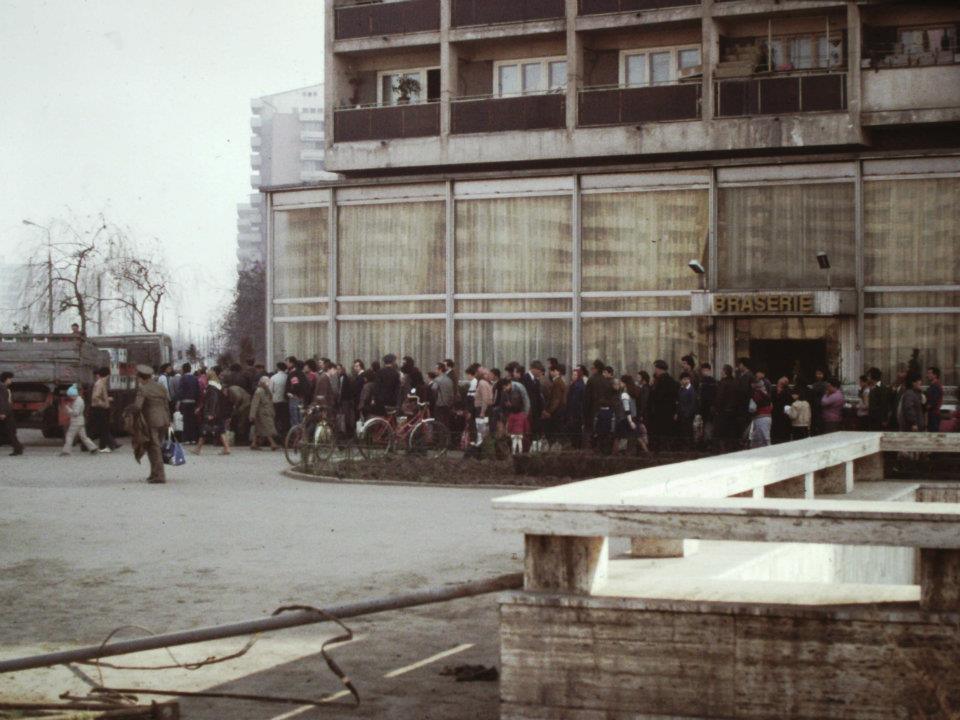
A queue for cooking oil, Bucharest, 1986. Taken by Scott Edelman.
The Romanian dictator, his wife and their dogs were eventually executed, ironically in the year they finally paid off the IMF debt. Since then, the country has not only failed to get back on its feet, but has positively shot itself in said feet. In 1996, an attempt at heavy privatization led to a doubling of the poverty rate, and most of the unemployed simply gave up city life and went to rural areas to try their hand at feeding themselves, a unique event in post-war Europe. Refusing to learn their lesson, Romania took out a $26 billion dollar loan from the IMF in 2009, with a whopping 15% interest rate.
Luckily my family escaped this sinking ship shortly after the dictatorship crumbled, and when we finally made it to Belgium as refugees, bread was somehow plentiful in groceries, and would quickly disappear from our table. On picnics we would have as much bright, soft, chewy white bread as we wanted, with a perfect orange rectangle of cheese nestled inside, ready to caress our young palates.
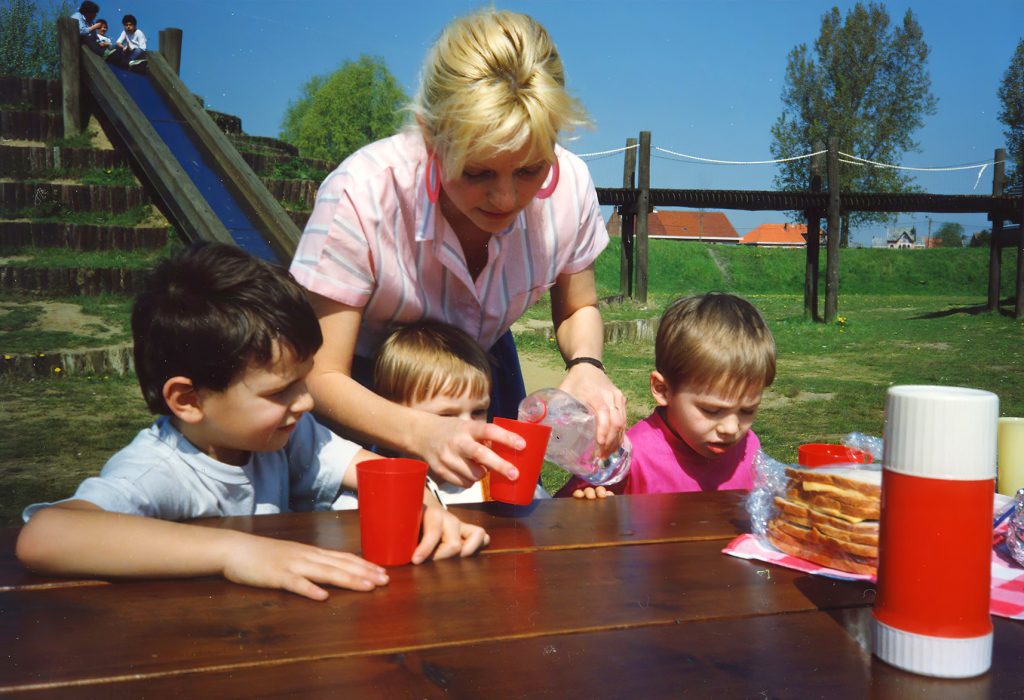
We could finally splurge on heavenly drinks like Fanta, the most beautiful and delicate of all sodas. Its graphic design was part of that playful but sober era where they had highly trained, straight-laced artists trying to find the language of visual cat-calling while flirting with sensible design principles. Fanta’s orange liquid with tiny, perfect spheres of joyous fizz was like the buoyant spirit of fruit itself, purer than what the Earth could create.
The uncontested dragon of brands was Coca-Cola. Compared to the gentle whisper of Fanta, the calligraphic Coke roars in our old photos, its otherworldly red crushing shadows and highlights, making it look like it’d ripped open the wound of the image. The liquid’s harsh dark colour reminds me of no-nonsense coffee reserved for world-weary homicide detectives, yet hides a secret sweetness that leaves teeth begging for mercy and tongues crying out for more.
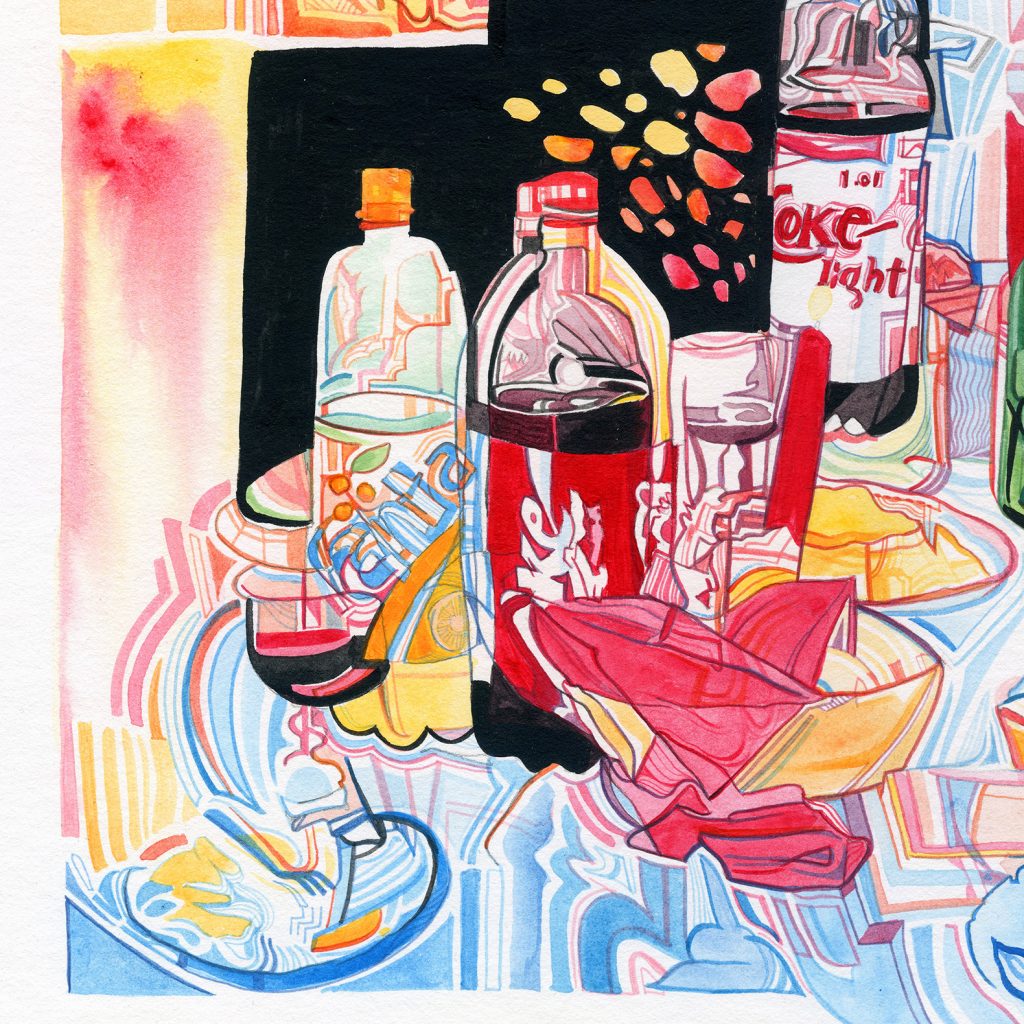
Meat, scarce for anyone without connections back in Romania, was dirt cheap in Belgium provided you didn’t mind the odder cuts like tongue and brain, which were prized delicacies in our home. Donating blood in Canada is now forbidden for me because of this.
The greatest of all meals was not ever photographed, since it was shrouded in controversy. Mâncare Porcească, or, awkwardly translated as “The Food for/of Pigs”, involved dipping mămăligă into a tray of pork chops, seasoning it with the savory juices from the baking pan and topping it off with crumbly blocks of feta. The richly buttered and caramelized meat, combined with the arctic white cheese and the bouncy sunshine of mămăligă was a festival for my eyes & mouth, its ecstasy peaking whenever I used my fingers to eat it. My dad found this disgusting and forbade it, but he was really busy with work, so there was hope for my gustatory pleasure. Mom or grandma wasn’t too happy about it either, but they took such joy in watching me devour it bare-handed that they’d sometimes let it slide.
Although Romania’s dictatorship left a permanent blight on the history of our homeland and that of alternative economic systems, gramma didn’t have it much better when she was growing up, although her case of rural poverty is more common throughout history than the IMF’s crushing grip. Her early diet consisted mainly of fruits picked from trees in her yard and mămăligă with onions. If all went well, chicken would be served once a week, and beef once a month. The mere presence of a common citrus fruit like an orange was a marvel saved for something like Christmas, and involved the hilariously adorable practice of eating it like a peach, unpeeled, and proudly powering through the bitter burn that this would inflict on their lips. Another Christmas delicacy was cozonac, a sweet and fluffy egg bread with swirls of walnut inside, which they would eat slowly, placing it next to their pillows at night so they could wake up to it in the morning.
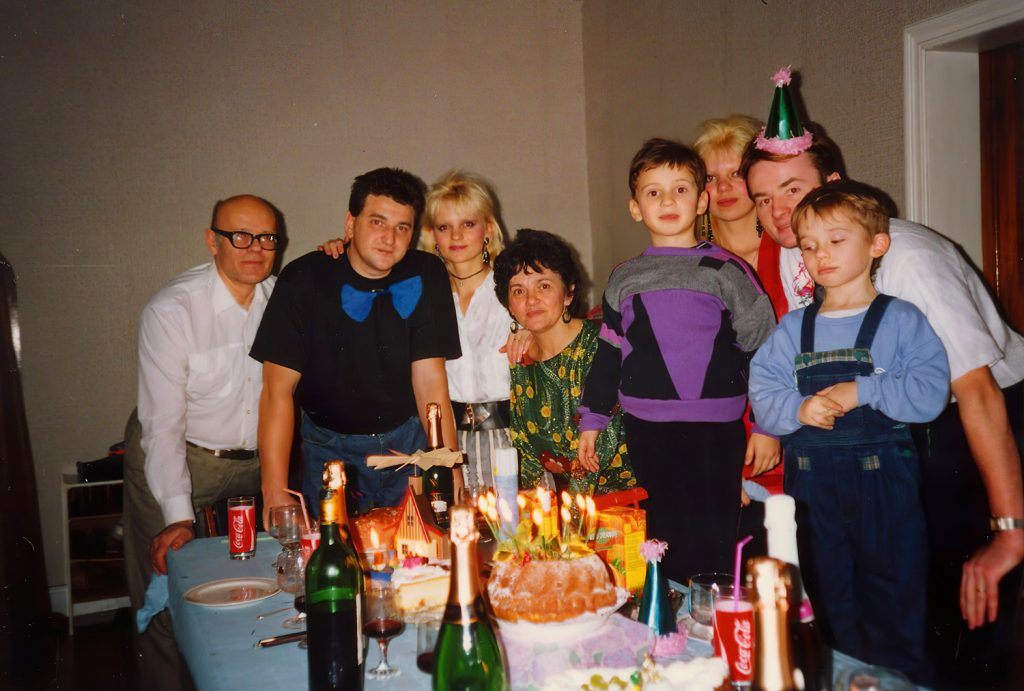
Like most grandmas, her most important goal seems to be stuffing food into her grandchildren, although she would often talk about how much she hates being pressured to eat food. One traumatic experience involved staying with her sister and brother-in-law during a time of post-war austerity, where food was scarce and each person had a portion that needed to go a long way. Her brother-in-law poured her a glass of milk which she refused due to an uncooperative appetite, to which he responded by splashing the milk in her face. This simple act of cruel humiliation has stuck with her all her life, and, on occasion, I’ve mercifully been allowed to eat less because of it.
When I came to Toronto, I didn’t want to tell people about Mâncare Porcească, mămăligă, or cozonac. I suppose I thought of it as too ethnic, too weird, especially since it wasn’t hip like the cuisines of other cultures; Chinese, Vietnamese, Mexican, Russian, Polish, Caribbean, etcetera. And besides, my new favourite food was literally *all* the candy. Our local convenience store had an array of cheap sugary confections engineered to perfection and packaged in attractive artistic boxes dripping with fun cartoons. A life without Dunk-a-roos, Starbursts, Nerds, Pop Rocks, Jolly Ranchers, Fruit Roll-Ups, Fruit by the Foot, Gushers, Go-Gurt, Pop-Tarts, Big League Chew, and Sour Patch Kids would have been unthinkable.
Regular food the the adults fed me was generally a grim duty that simply opened up opportunities for more candy. The only thing that got in the way of independent candy wealth was the cost of candy, which I once tried to outsmart by simply stealing it from the shelves. How did anyone else not think of this? I stole two dollars worth of candy and got away with it, but the guilt was so intense that it not only ruined the experience of eating the candy, but shattered my disposition for days. How could my ten year old soul have been so poisoned by something so minor? It seemed that my conscience would simply not allow five-finger discounts.
The incident inspired me to start my own business. This consisted of borrowing a cooler and spare Pepsi-Cola cans in our apartment, heading down to the main bus stop and trying to sell it to people coming home from work. We charged two bucks a pop, a whopping three dollars in 2019 money. Other kids who were inspired by us got on rollerblades and stole entire cases of pop from gas stations, where it was stacked outside unattended. They ended up just drinking most of the pop themselves.
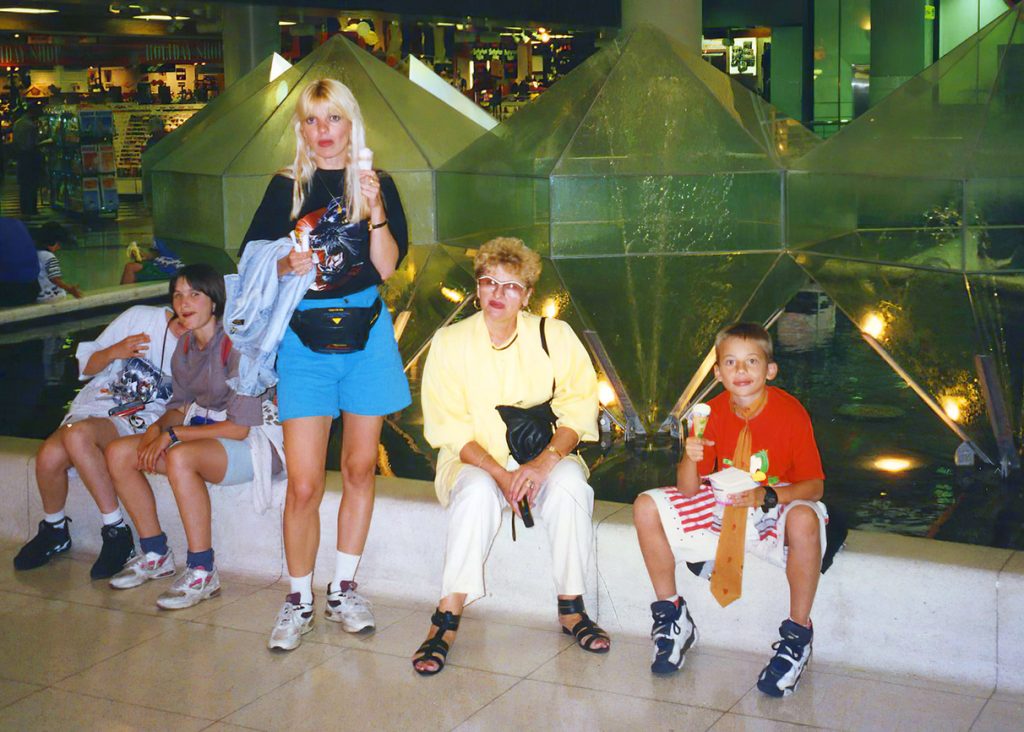
In high school my idea of a fine meal was a box of Krispy Kreme donuts, two slices from 241 Pizza or Jamaican patties idling in little gas-station toaster ovens. When I was criticized by more health-conscious peers, I’d effectively say, “what gives? If it’s for sale and it tastes good, it can’t be that bad, and besides, look at me, I’m in great health.” I’d been blessed in this regard, since I managed to climb up the CN Tower in great time even though my main idea of sport was gunning people down online in Counter-Strike.
Spending a lot of free time online also meant getting exposed to new ideas. Not the myriad ways of insulting strangers, but rather researching food. It might have been boredom and curiosity that led me there, but to my shock and horror, it turned out that all those delicious chunks of food were in many cases sentient creatures nurtured by mothers, who cry, have dreams, and enjoy frolicking with siblings. This seemed like a moral catastrophe beyond anything I’d imagined, and it was happening on a regular basis without most people paying attention. Not only that, but it looked like most delicious food is really unhealthy. Don’t even get me started on what I found out about religion. To solve this problem, I figured, the world would need another overzealous and argumentative teenager.
It turns out that suggesting other people are morally corrupt and stupid can make you unpopular. Certainly, if I wasn’t already alienated enough by spending most of my time in front of a glowing screen, I certainly took it to another level by operating under the suspicion that the whole world is fundamentally broken and blind to its own cruelty. As my faith in a God that watched over us started to erode, so did my trust of society, and ultimately in my own senses; if my tongue tells me that Krispy Kreme donuts are heaven but my mind tells me it’s garbage, what else am I wrong about? Possibly everything.
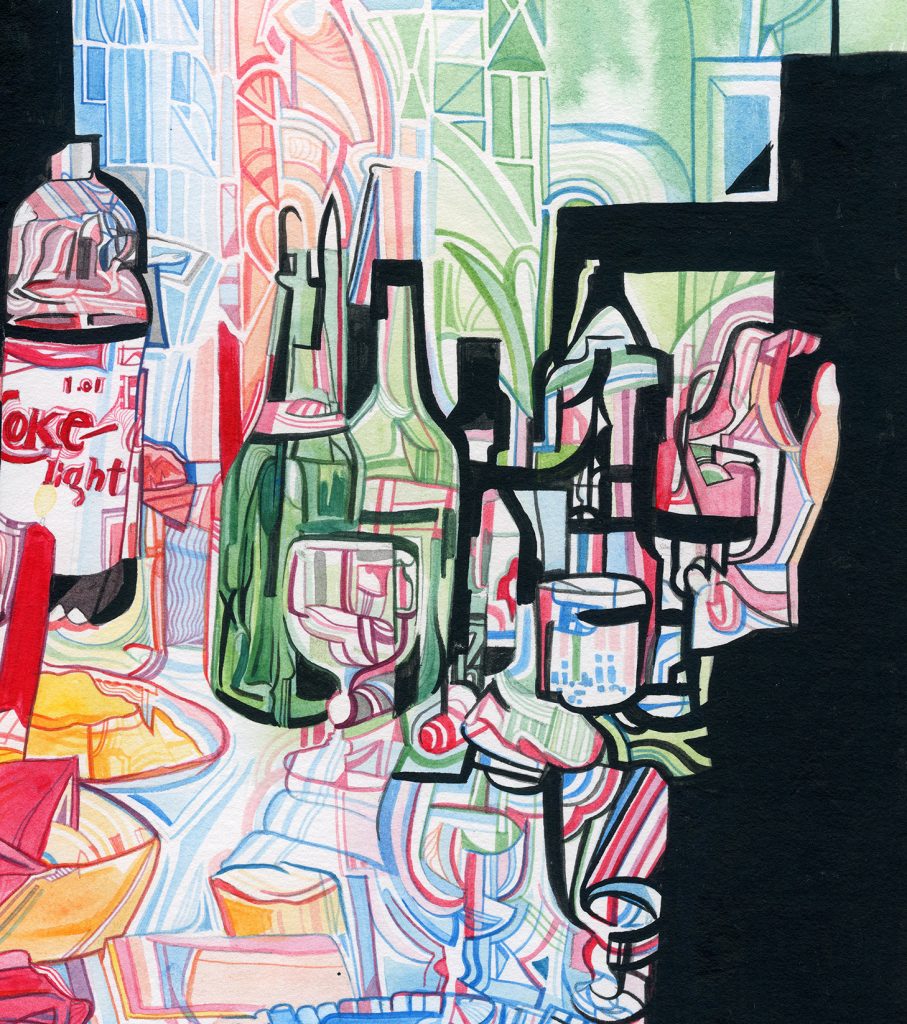
Although I’ve since discarded the juvenile idea that I have some world-shattering insight into these issues, it still fascinates me how something as simple and basic as food is riddled with doubt and uncertainty. Alongside religion and politics, it seems nutrition is another subject that explodes into argument; ask someone whether or not butter is better than margarine, or whether bread and milk are healthy, and you might find you’ve stumbled on sacred territory.
I’ve read so many accounts of miraculous health improvements after dairy and gluten were cut out, that you’d think the billions of human beings throughout history who have relied on these staples were crawling in near-death for most of their lives. And even though I previously ate wheat products with impunity and mocked the gluten-free fad, after my GI infection, I tried eating my beloved spinach-wheat wrap but felt such intense pain that I checked myself in to a hospital.
Thankfully, for most of my life, questions of diet were generally academic. I’ve never gone hungry like my parents or grandparents did, and if I ate a bunch of cheese or a big load of bread, maybe I’ll feel worse, maybe nothing will happen. The biggest impact for my health was quitting coffee and ibuprofen, taking long walks, avoiding big meals late at night, eating regularly, and waking up at the same time each morning. Obvious stuff. But when you’re sick and apparently everything you eat and do is making you even more sick, you start to pay really, really close attention. Scouring the internet for advice on gastritis, GERD, diverticulitis and IBS has been a minefield of pretentious junk and half-baked ideas recycled uncritically.
As soon as I found a food that seemed like it might be safe, I’d find out there’s some hidden problem lurking behind it. Oatmeal is low-acidity, low-FODMAP, has a good soluble fiber profile that soothes the stomach, right? Wrong. It’s got anti-nutrients like phytic acid, avenin, and lectin which will ruin your gut.Bananas are soothing, full of vitamins & minerals, right? Wrong. They release histamines, are way too starchy, and don’t even think about having more than a single unripe banana if you want to keep FODMAPs under control. Problem foods might even be silently destroying your GI tract for days before the adverse symptoms manifest, as you blithely assume you’ve made proper dietary choices. Unwashed quinoa, which I’d been consuming for months, has an anti-nutrient called saponin which likes to make little perforations in the small intestine.
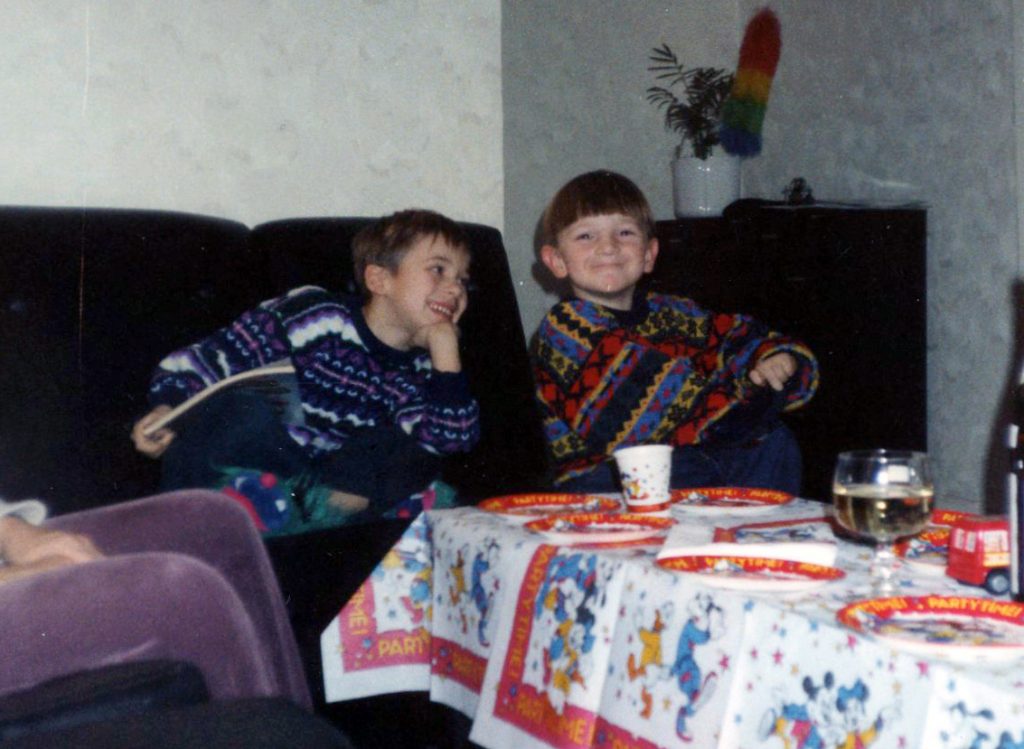
Such concerns simply didn’t exist for me or my family in those old photos, although Coke Light might suggest a slight concern with nutrition. Rightly so, since I suppose if I was hearty enough to survive the chokehold of our basic food supply, I was tough enough to subsist on hyperpalatable processed foods. Those days are gone, and with it my childish lack of consciousness of the unsurpassed wealth that is a properly functioning body and digestive system. I’m reminded of the opening to Ginsberg’s ecstatic footnote to Howl:
Holy! Holy! Holy! Holy! Holy! Holy! Holy! Holy! Holy! Holy! Holy! Holy! Holy! Holy! Holy!
The world is holy! The soul is holy! The skin is holy! The nose is holy! The tongue and cock and hand and asshole holy!
Everything is holy! everybody’s holy! everywhere is holy! everyday is in eternity! Everyman’s an angel!
The bum’s as holy as the seraphim! the madman is holy as you my soul are holy!
For me, old family photos evoke that spirit of being in awe at mere existence, where sacred beauty and meaning permeates every detail. The folded magenta napkin is holy, the ribbed Fanta bottlecap is holy, the half-eaten baguette is holy, the capsized greasy fork is holy, the scattered mămăligă crumbs are holy. In communist Romania, religious worship was begrudgingly tolerated at the best of times and brutally oppressed at the worst, with important figures either thrown in prison, exiled or killed. The Bibles that weren’t pulped into toilet paper would be hard to find. People in my family would have to worship privately, sometimes secretly painting religious scenes and trading them on the black market. I love that detail, since it offers a golden narrative to my life as a visual artist; born into a world poisoned by interest rates, export quotas, price manipulation, merciless rationing, low caloric ceilings and the bottom-line, my blood looked to the forbidden sacred dimension of life, filled with beauty, colour, mystery, faith and subjectivity.
I can’t imagine I’ll ever drink another Coca-Cola again, or eat another slice of cake with powdered sugar. The pain I went through in March of 2019 was so intense, that I can’t in good conscience ever again take my stomach for granted and prioritize mouth pleasure. Health and life can change in a single day, from one hour to the next, so I try to savour each bite that I can stomach, in order to find some calm within the ocean of bullshit that is nutritional advice. If I recover, I vow to forever pay respect to the holiness that is eating, chewing, swallowing, digesting, burping, peeing, farting, and shitting. Ask anyone with IBS, diverticulitis or colitis and they’ll tell you…
…that shit is holy.
